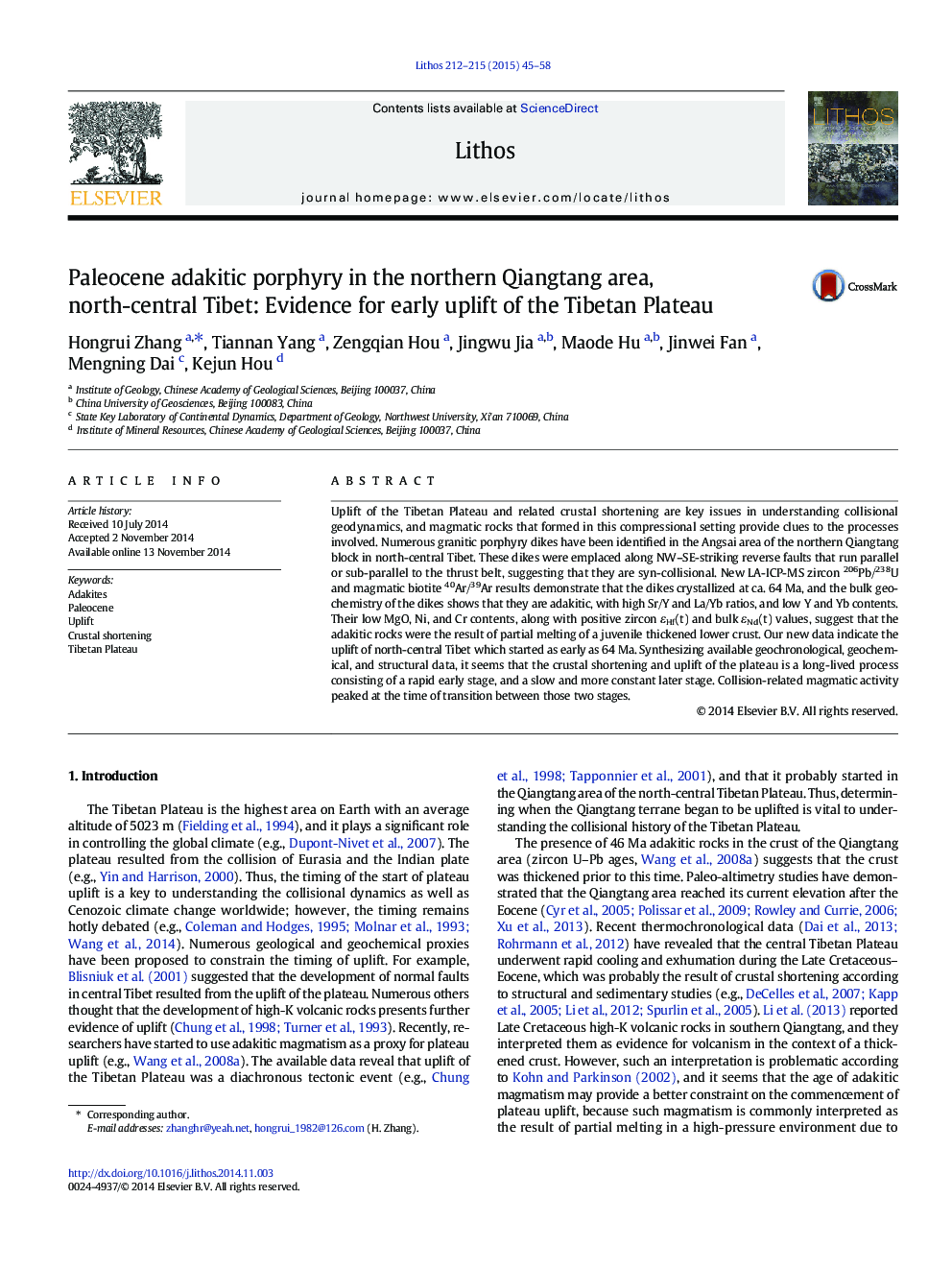| کد مقاله | کد نشریه | سال انتشار | مقاله انگلیسی | نسخه تمام متن |
|---|---|---|---|---|
| 4715787 | 1638669 | 2015 | 14 صفحه PDF | دانلود رایگان |

• The Angsai granitic porphyry dikes from the north-central Tibet are dated at 64 Ma.
• The Angsai dikes have the geochemical characteristics of High-K adakitic rocks, and derived from a thickened lower crust.
• The uplift of central Tibet probably began as early as 64 Ma.
Uplift of the Tibetan Plateau and related crustal shortening are key issues in understanding collisional geodynamics, and magmatic rocks that formed in this compressional setting provide clues to the processes involved. Numerous granitic porphyry dikes have been identified in the Angsai area of the northern Qiangtang block in north-central Tibet. These dikes were emplaced along NW–SE-striking reverse faults that run parallel or sub-parallel to the thrust belt, suggesting that they are syn-collisional. New LA-ICP-MS zircon 206Pb/238U and magmatic biotite 40Ar/39Ar results demonstrate that the dikes crystallized at ca. 64 Ma, and the bulk geochemistry of the dikes shows that they are adakitic, with high Sr/Y and La/Yb ratios, and low Y and Yb contents. Their low MgO, Ni, and Cr contents, along with positive zircon εHf(t) and bulk εNd(t) values, suggest that the adakitic rocks were the result of partial melting of a juvenile thickened lower crust. Our new data indicate the uplift of north-central Tibet which started as early as 64 Ma. Synthesizing available geochronological, geochemical, and structural data, it seems that the crustal shortening and uplift of the plateau is a long-lived process consisting of a rapid early stage, and a slow and more constant later stage. Collision-related magmatic activity peaked at the time of transition between those two stages.
Journal: Lithos - Volumes 212–215, January 2015, Pages 45–58